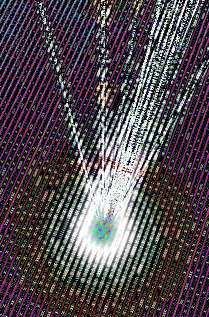Data sent with no heat loss
 Australian researchers have developed a high-tech and efficient new system to transport data using atomically-thin semiconductors.
Australian researchers have developed a high-tech and efficient new system to transport data using atomically-thin semiconductors.
Researchers at the Australian National University (ANU) say their breakthrough could one day help power next-gen computers and smartphones.
They were able to obtain a vastly improved level of energy efficiency by mixing excitons - electrons bound with electron holes - with light in one-atom thin semiconductors, which are around 100,000 times thinner than a sheet of paper.
Tests so far suggest the system requires less electricity to run because it does not give off any heat, meaning no energy is wasted.
They have also been able to demonstrate highly efficient transportation of information carriers - particles which can transport data in computers - using semiconductors at room temperature.
“Computers already use around 10 per cent of all globally available electricity, a number which comes with a massive financial and environmental cost, and is predicted to double every 10 years due to the increasing demand for computing,” says PhD scholar Matthias Wurdack, from the ANU Research School of Physics.
“Estimates show that our computing devices, the internet, data centres and other digital technologies account for at least two per cent of global greenhouse gas emissions, which is similar to aviation pre-COVID.”
Mr Wurdack, who is the lead author of this new research paper, says the new development addresses the heating problem that drives electricity consumption around the world.
“A huge amount of the energy used by computers is wasted because the electricity used to power it heats up the device as it performs its tasks,” he said.







 Print
Print